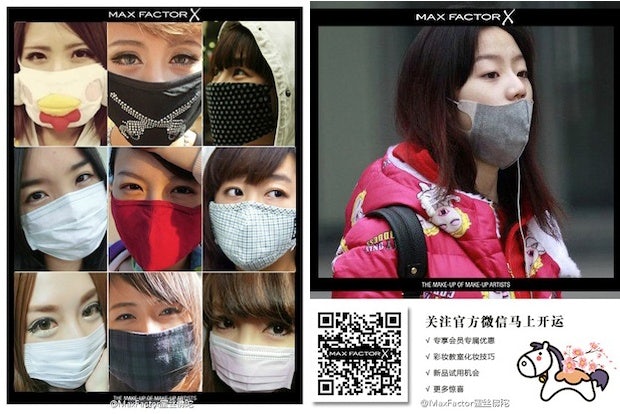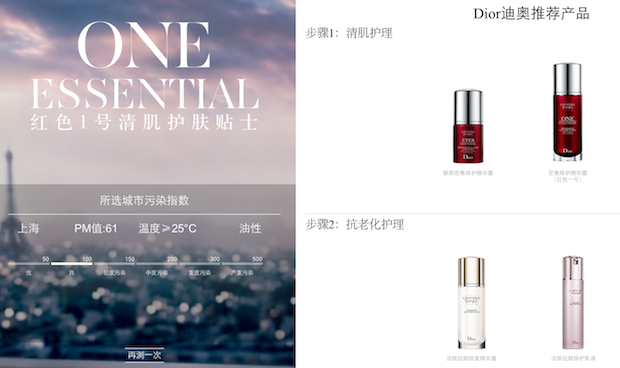
Submissions to Max Factor's pollution mask eye makeup selfie contest. (Sina Weibo/Max Factor)
Last week, cosmetics company Max Factor embarked on a new social media marketing campaign that could happen only in China. As a result of the rising number of city-dwellers forced to wear face masks to guard against dangerous pollution levels, the company sponsored a Sina Weibo “selfie” photo contest for female users to submit images of their eye makeup application skills, with a twist—they had to be wearing a pollution mask.
This social media campaign was only one of several recent efforts by brands to market their products in the name of fighting the negative effects of China's worsening pollution levels. Max Factor’s campaign was pretty successful: more than 33,000 Weibo users have tweeted the campaign’s hashtag, showing off a range of stylish masks paired with meticulously applied eye makeup. Since the campaign is going until April 25, that number is likely to grow substantially.
This wasn’t the only beauty brand to take advantage of China’s worsening pollution as a promotional opportunity. Last June, Dior launched a social media campaign and mini-site that displayed Chinese cities’ PM2.5 (particulate matter) ratings alongside personalized product recommendations, responding to Chinese women’s concerns that the pollution might do damage to the beauty of their skin. “In January 2013, Beijing’s smoggy weather accumulated for as much as 25 days,” the site stated, listing ostensibly pollution-fighting skin products for users based on their selected age, city, and main skin concerns.

An image from Dior's marketing campaign centered around protecting skin from heavy pollution. (Dior)
In addition to cosmetics, another industry that stands to benefit from pollution frustration is the auto sector, where car companies can tout their “green” credibility as the government regulates car use in cities and subsidizes electric vehicles. In September, Volvo teamed up with Galaxy SOHO to launch a “Green Air” campaign on Sina Weibo, which called on participants to list their environmental protection ideas. The winner with the best post was selected as Volvo’s “Green Ambassador” and received the use of a free Volvo for one year. Volvo has made other efforts to boost its ecological image on China’s social media. The company also sponsored a product safety campaign for school uniforms following a scandal in which school uniforms in Shanghai were found to contain toxic chemicals.
Brands appear to be appealing to two main mindsets with their campaigns: some, like Volvo, aim for an image of corporate social responsibility, and encourage user participation in the name of making a difference for the environment. Meanwhile, the beauty brands appear to be going for more self-interested motives—namely, women’s efforts to stay beautiful despite being bombarded with a thick layer of smog and having to wear a hospital-like mask whenever they leave the house.
The focus on eco-friendly marketing—aimed at appealing to both altruism and vanity—makes sense in China, where urban residents come face-to-face every day with the country’s serious environmental problems. In the future, we're likely to see more brands joining this trend, as China's cities grow grayer and citizens become even more fed up with the smog.